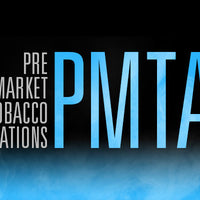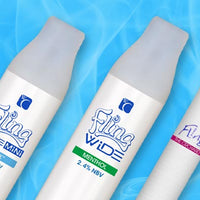Customer Service Sentinel, Guest Blogger and Regulations Expert Tim Zeller is back to explain the FDA’s e-cigarette regulation workshops.
On Monday, March 9, the FDA will begin the second of three expected e-cigarette regulation workshops. The first e-cigarette regulation workshop took place in 2014. Before the second workshop starts on Monday, we’re going to try to clarify the sometimes difficult-to-understand aspects about the FDA’s role in the e-cig industry. What is the purpose of FDA e-cigarette workshops? Are they going to regulate the e-cigarette industry? What e-cigarette regulations are being considered?
An Overview of FDA Deeming Regulations

To start, let’s go back to last year when the FDA announced that they were developing deeming regulations for e-cigarettes, stating their intent to regulate the popular devices in the interest of public health: As an e-cigarette company, we are supportive of science and evidence-based regulation, at an appropriate level, that is in the interest of harm reduction and public health.
Some FDA & E-cig Regulation History
Although April 2014 was when the FDA announced their plan for deeming regulations, their attempts to regulate e-cigs date back to 2009. The FDA originally intended to regulate e-cigs as medical drug delivery devices and, in 2009, a large shipment of e-cigs was seized while it was being imported into the country.
Sottera, Inc., doing business as NJOY, was affected by this seizure and took the FDA to court. This ultimately led to a Supreme Court battle known now as the Sottera Case. The case result was that the Supreme Court decided the FDA was overextending its reach by attempting to regulate e-cigarettes as medical devices, as there were no therapeutic claims being made about the benefits of the product.
The court noted that if the FDA wished to regulate e-cigarettes, it would have to be through their ability to regulate tobacco products. Since most e-cigs contain nicotine, and nicotine is a naturally occurring alkaloid found in tobacco plants, this was the path the FDA decided to take toward regulations. So the whole basis for the FDA’s proposed deeming regulations stems from the Family Smoking Prevention and Tobacco Control Act (2009), which granted the FDA authority over tobacco products.
Related: FDA Regulations: How Far Should They Go?What Are Deeming Regulations?

“Deeming regulations” are referred to as such because the FDA deems that e-cigs are within their authority to regulate. In general, the proposed deeming regulations are still undefined and open to interpretation. However, there are elements that seem to be likely inclusions when the regulations are finalized. Factors include requiring manufacturers to register with the FDA and provide an ingredients list of what is contained in their products. The FDA has proposed a standard health warning that covers 30 percent of packaging which should state: “WARNING: This product contains nicotine derived from tobacco. Nicotine is an addictive chemical.”
Making claims about potential health benefits will be prohibited, unless the FDA confirms that the claim is supported by appropriate scientific evidence. Manufacturers will also be prohibited from providing free samples, while both manufacturers and retailers will be prohibited from selling e-cigs to minors.
FDA Comments and Workshops
After their initial announcement that they were developing deeming regulations, the FDA allowed for a 75-day public comment period, in which any member of the public and any organization could submit their studies, concerns and thoughts to be considered. The FDA received over 150,000 comments and all of them must be considered.
Related: White Cloud’s Response to FDA’s Proposed Regulations
In conjunction with these comments, the FDA announced it would be hosting three workshops to address and would discuss a variety of topics relating to electronic cigarettes. The first of these e-cig workshops was held in 2014 and focused primarily on the mechanical science of what is contained in e-cigarette e-liquids, batteries and atomizers. These topics tackled issues ranging from how much nicotine is dispensed with each draw from an e-cigarette to the efficacy of – and potential need for – childproof packaging.
This Month’s FDA Workshop
The second FDA e-cig workshop is planned to start March 9, and will pertain to the human element of e-cigarettes, such as toxicological considerations about potential toxicity of inhaled aerosols. The workshop will also explore behavioral aspects of e-cigs and a topographical view of e-cig users, as well as potential health effects, which could vary between different types of users, including youth users and those who use both tobacco and electronic cigarettes, etc. (Details of the third workshop have not yet been announced.
Encouraging Steps, But An Unclear Outcome

The FDA is clearly following a stepwise process with their regulatory process. It is encouraging to see that they appear to be considering science and evidence in their development of how to regulate e-cigs, but the final outcome is still less than clear. The proposed deeming regulations are also likely to change when new information becomes available–much of it, potentially, emerging from the FDA’s own funded research.
In an area that is in urgent need of evidence-based regulation that could help smokers in their search for potentially safer alternative to tobacco products, it is unfortunate that it could take several months – if not years – before regulation is finalized by the FDA.
Stay Tuned
White Cloud will be closely monitoring the workshop that starts on March 9. We’ll be back here to share with you what was covered during the workshop and what it could mean to the industry.






